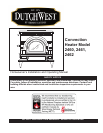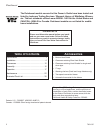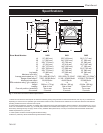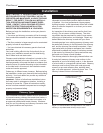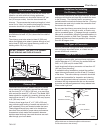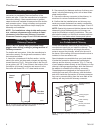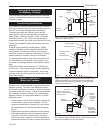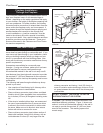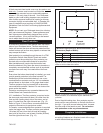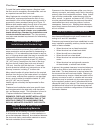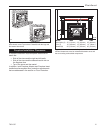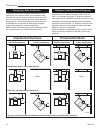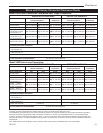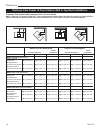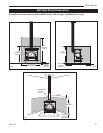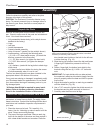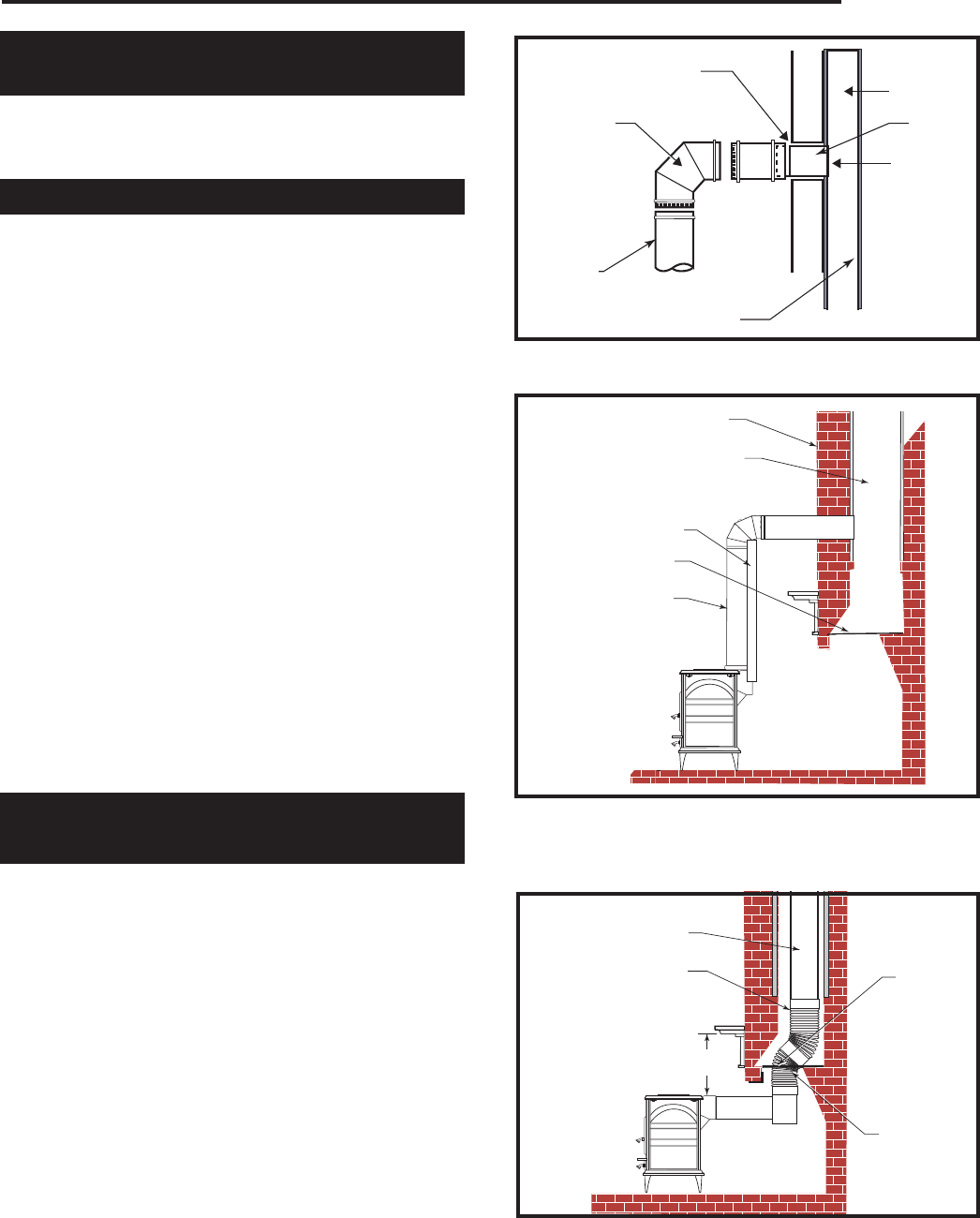
7
Dutchwest
7001135
Securing the Connector
to a Masonry Chimney
The Dutchwest Convection heaters may be connected
to either a freestanding masonry chimney or a masonry
fireplace chimney.
Freestanding Installations
If the chimney connector must pass through a combus-
tible wall to reach the chimney, follow the recommenda-
tions in the wall pass-through section that follows.
The opening through the chimney wall to the flue
(the “breech”) must be lined with either a ceramic or
metal cylinder, called the “thimble”, which is securely
cemented in place. (Fig. 7) Most chimney breeches
incorporate thimbles, but check to be sure the fit is snug
and the joint between thimble and chimney wall firmly
cemented.
A special piece called the “thimble sleeve,” slightly
smaller in diameter than the standard connector and
most thimbles, will ease the removal of the chimney
connector system for inspection and cleaning. Thimble
sleeves should be available from your local dealer.
To install a thimble sleeve, slide it into the breech until
it is flush with the inner flue wall. Don’t extend it into
the actual flue passage, as that could interfere with the
draft.
The thimble sleeve should protrude 1-2” (25-50 mm)
into the room. Use furnace cement and thin gasketing
to seal the sleeve in place in the thimble. Secure the
chimney connector to the outer end of the sleeve with
sheet metal screws.
Fireplace Installations -
Above the Fireplace
In this installation, the chimney connector rises from
the stove, turns ninety degrees, and goes back into the
fireplace chimney. The liner of the fireplace chimney
should extend at least to the point at which the chimney
connector enters the chimney. Follow all the guidelines
for installing a chimney connector into a freestanding
masonry chimney, and pay special attention to these
additional points:
• Check the stove and chimney connector clearances
to combustible mantel or trim materials. Use the
necessary combination of mantel, trim, and connec-
tor heat shields to provide the required clearances.
(Fig. 8)
• Double-check connector clearance from the ceiling.
• The fireplace damper must be closed and sealed
to prevent room air from being drawn up the flue,
reducing the draft. However, it must be possible to
re-open the damper to inspect or clean the chimney.
ST245a
fireplace
flex connector
6/00
Flue Liner
Extend Chimney Con-
nector to the First Tile of
the Flue Liner
Observe
Miniumum Clearances
Damper
Plate is
Remvoed
or Locked
in Open
Position
Close Off
the Damper
Opening with
Sheet Metal
and Sealant
ST245a
Fig. 9 The connector passes through the fireplace to enter
flue. Special Fireplace Adapter Kits to simplify fireplace instal-
lations are available from your local dealer.
ST244a
Dutchwest
fplc over mantel
6/00
Masonry Wall
Ceramic Flue Liner
Chimney Connec-
tor Shield
Block-Off Plate
Chimney Connector
ST244a
Fig. 8 The connector enters flue above the fireplace. If the
clearance between the chimney connector and either the
mantel and/or the ceiling is inadequate, special protective
shields will be required.
ST243
thinble connection
12/13/99 djt
Thimble
Sleeve
Elbow
Flue
Keep
Sleeve
End Flush
with Flue
Tile
Thimble
Flue Liner
Chimney
Connector
ST243
Fig. 7 The thimble, made of either ceramic or metal, must be
cemented in place securely.



